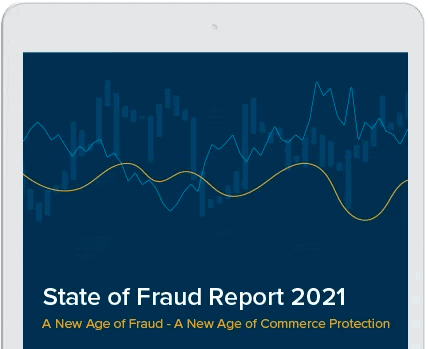Wellness and looking good, otherwise known in the retail industry as Health, Beauty and Cosmetics, helped lead ecommerce sales for June, but with a twist. Shoppers passed on lipstick and makeup purchases and turned their focus inward, boosting sales of health and supplements to 130% in June, a jump of 96% from May, Signifyd’s Ecommerce Pulse data shows.
Sales across the health and beauty vertical were up 22% in June from a year ago, but the only sub-category that increased in sales was health and supplements. With the uncertainty of almost everything economically, and COVID-19 still lurking, getting healthy and feeling good seemed to take precedence over eye shadow.
Ecommerce sales were solid with sales up 15%
Overall, ecommerce had a solid month in June, with sales up 15% and cart sizes expanding by 70% year over year. In fact, excluding home goods, June sales in all verticals increased handily, with consumer electronics and fashion apparel each up 36% from a year ago. Sales of sporting goods increased 10% and expanded in cart size by 9% from this month last year, when summer fun was approached with a bit more hesitancy.
“Regardless of the prospect of a downturn or whether it will meet the threshold of a recession, the consumer outlook over the next few months remains favorable…” says Jack Kleinhenz, chief economist for the National Retail Federation.
With inflationary pressure and talk of a recession, sales across the home goods vertical in June were down 16% from last year; however, shoppers dug out their stored credit card and gift cards to increase spending 1278% in June, year over year. Sales of home improvement and appliances plunged in June, but were still up 22% overall from a year ago. Sales of furniture had a negligible increase.
This all feeds into the thinking by the U.S. Travel Association that shoppers are looking to buy experiences and slow their pace of buying goods. Domestic leisure travel is now fully recovered to 2019 levels, it says, and the last couple years of cloistered living has resulted in a strong pent-up demand for summer leisure travel.
Consumers are on the move again
But everybody knows you can’t have a travel experience without at least some luggage and a few new clothes. Or maybe just a new summer dress. Low-ticket fashion (average order value $250 or less) continued its recent surge and increased 49% in June, year over year. High fashion (value more than $500) which had steadily plunged in recent months, made a comeback and increased 15% from a year ago. The purchase of luggage and travel accessories, which peaked in April and made a downturn, still increased 24% this June from last year. So one vertical feeds another. After all, we have a summer!
- Ecommerce sales had a solid month in June, with sales up 15% across all verticals and cart sizes up 70% year over year.
- Consumer abuse, when shoppers receive a perfectly fine order but claim otherwise, increased 146% across all verticals in June, year over year.
- Signifyd data shows that fraud pressure in June across all verticals was up 63% from a year ago, and it identified geo and device spoofing as the fraudsters’ crime tool du jour.
- Fraud pressure of aged accounts, an indication of account takeover attempts, increased in June 1904% in home goods and 1501% in sporting goods from a year ago.
In-store shopping has returned with joy, but the ecommerce purchasing options offered by savvy retailers throughout the pandemic continue to entice shoppers: In health, beauty and cosmetics, the buy online, pick-up in-store plan boosted omnichannel sales 204% in June, year over year, and the buy now pay later option was up 60% from a year ago, Signifyd’s data shows.
Shoppers love being spoileΩ.
“Retailers recognize that they have to keep finding new and creative ways to deliver value,” says Matthew Shay, NRF president and CEO. “The heartening part about this is that, in spite of the challenges and the reality of the environment, I think there’s optimism that we can continue to serve customers and give them great experiences.”
In consumer electronics, shoppers have embraced in-store and curbside pickup, Signifyd data shows. This option was up 1664% in June from a year ago, and has solidified in the overall marketplace as being commonplace. Walmart Inc. CEO Doug McMillon said that in fiscal 2022, the number of online orders fulfilled from his stores grew 170% year over year. “Our stores have become hybrid. They’re both stores and fulfillment centers,” McMillon told Digital Commerce 360.
Online fraud attacks also increased in June
So while more of us stepped happily into a somewhat relaxed June summer, Signifyd continued to track the nefarious versions of a fraudster’s summer fun. Across all verticals, Signifyd data shows that fraud pressure was up 63% in June from a year ago, and it identified spoofing as the fraudsters chosen tool. Basically, there are various spoofing techniques, but the goal is to fool shoppers into thinking they are dealing with a genuine merchant, and then gain personal and credit card information to steal their money, or payment accounts, or identities.
In June, Signifyd’s machine learning detected that fraudsters concentrated on two types of spoofing: geo, which masks an IP address to gain illegal access to a computer or network; and device, which masks the device being used. Overall, geo spoofing was up 28% and device 11% in June from a year ago, but a few verticals were hit harder than others. June saw geo spoofing attempts of consumer electronics increase 334% and device spoofing 188%, respectively, from last year. Sporting goods was also a target, with geo-spoofing up 125% and device spoofing up 168% year over year.
It may be summer, but fraudsters, and Signify don’t take vacations.
Looking to conduct fearless commerce? Let’s talk.











